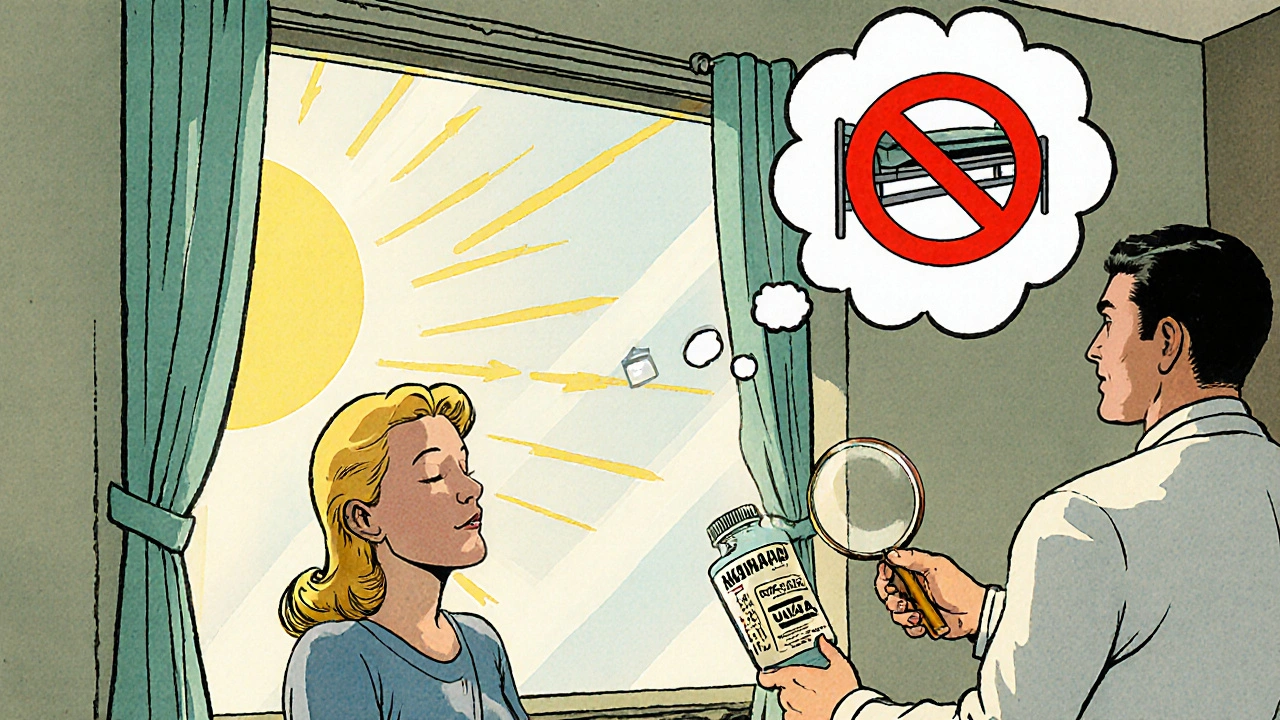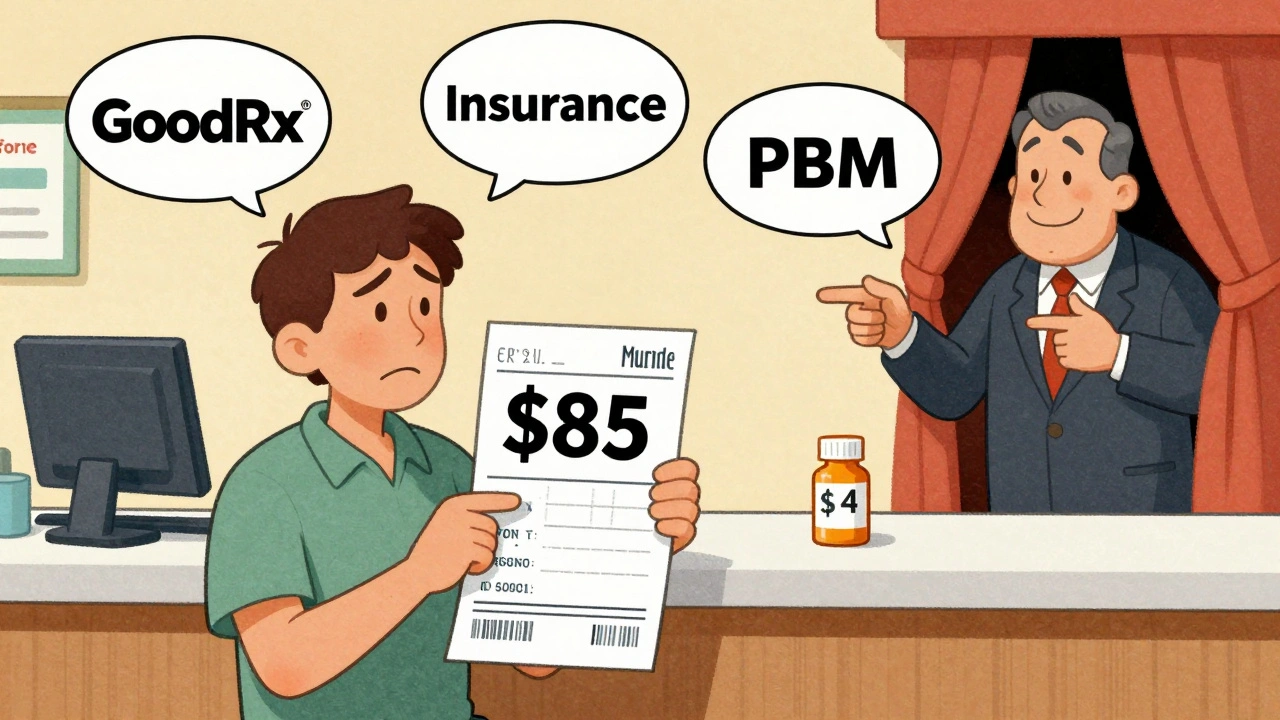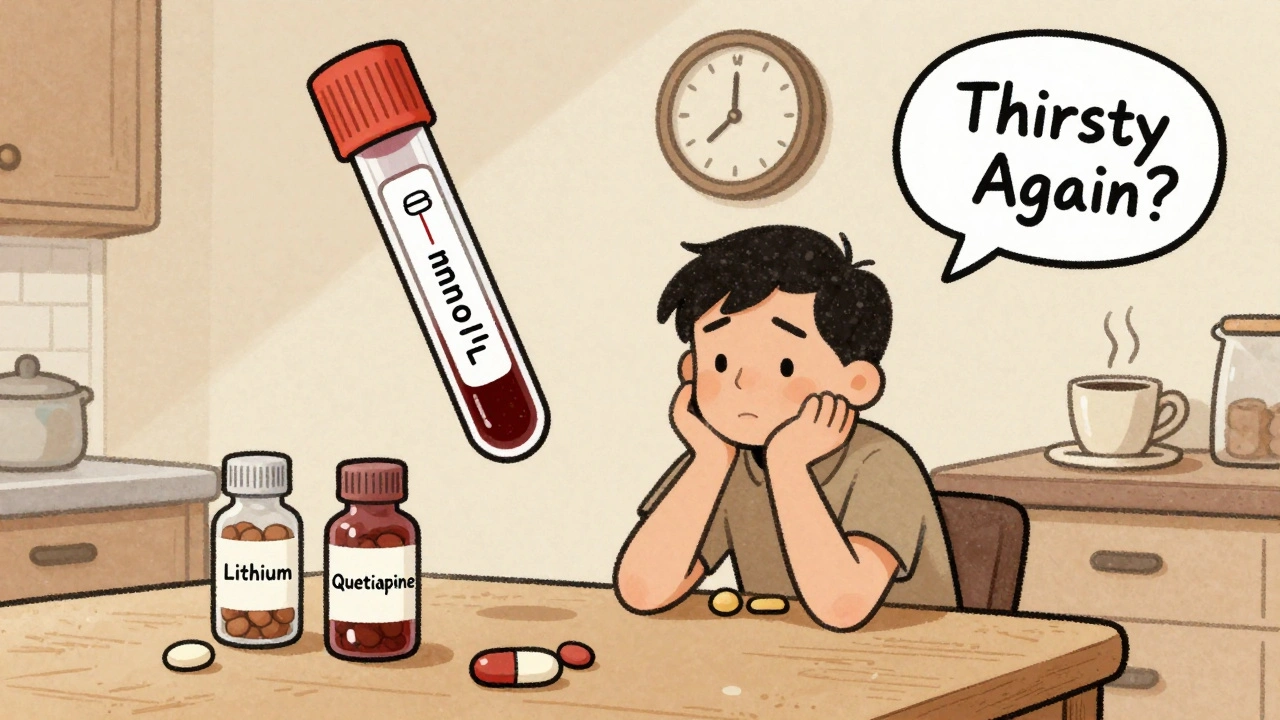Photosensitivity Protection Calculator
This tool helps you assess your sun protection effectiveness based on the article's recommendations. Enter your details below to see if you're adequately protected against photosensitivity reactions.
Your Protection Profile
Protection Assessment
Every year, millions of people experience unexpected skin reactions after just a few minutes in the sun. It’s not just a bad sunburn. For those with photosensitivity, even brief exposure can trigger painful rashes, blisters, or worsening of existing conditions like lupus or eczema. This isn’t rare. About 10-20% of the population has some level of sun-triggered skin sensitivity, often because of medications, autoimmune diseases, or genetic factors. The good news? You can prevent these reactions-with the right strategy.
What Is Photosensitivity, Really?
Photosensitivity isn’t one condition-it’s a reaction. Your skin reacts abnormally to ultraviolet (UV) light, usually UVA or UVB rays. There are two main types: phototoxic and photoallergic.
Phototoxic reactions are more common. They look like a severe sunburn, appearing within minutes or hours of exposure. Think redness, swelling, blistering. These happen when certain chemicals in your body-often from medications-react with UV light. Common culprits include doxycycline, hydrochlorothiazide, ibuprofen, and even some perfumes or citrus oils in skincare.
Photoallergic reactions are rarer. They’re immune-driven. Your body sees the UV-altered chemical as a threat and mounts a response. Symptoms show up 24-72 hours later, often as itchy, eczema-like patches. This type can develop even after using a product safely for months.
Either way, the damage adds up. Repeated exposure increases skin cancer risk. The Skin Cancer Foundation says 1 in 5 Americans will develop skin cancer by age 70. For someone with photosensitivity, that risk isn’t theoretical-it’s immediate.
Why Regular Sunscreen Isn’t Enough
Most people think SPF 30 sunscreen is enough. For someone with normal skin, maybe. For someone with photosensitivity? Not even close.
SPF measures protection against UVB-the burning rays. But UVA rays, which penetrate deeper and cause long-term damage, are just as dangerous. And standard sunscreen? It often doesn’t block enough UVA. That’s why broad-spectrum is non-negotiable.
Here’s the science: SPF 30 blocks about 97% of UVB. SPF 50 blocks 98%. That 1% difference matters when your skin is hypersensitive. Clinical guidelines from the NIH’s StatPearls recommend SPF 50+ for photosensitive patients. And don’t be fooled by “water-resistant.” That means protection lasts 40 or 80 minutes in water-not all day.
Also, most people apply only 25-50% of the amount needed. To get the SPF on the bottle, you need 2 milligrams per square centimeter of skin. That’s about one ounce (a shot glass full) for your whole body. Miss spots like ears, back of the neck, tops of feet-and you’re leaving yourself exposed.
Physical Blockers Are the Gold Standard
Not all sunscreens are created equal. Chemical sunscreens absorb UV rays. But for photosensitive skin, they can trigger reactions themselves.
Mineral sunscreens with zinc oxide and titanium dioxide sit on top of the skin and reflect UV light. They work immediately. No waiting. No irritation. And they’re stable in sunlight-unlike some chemical filters that break down.
Look for products labeled “non-comedogenic” and “fragrance-free.” Avoid anything with oxybenzone, octinoxate, or avobenzone if you’ve had reactions before. Stick to zinc oxide-based formulas. Many dermatologists now consider them the first-line defense for photosensitive patients.
UPF Clothing: Your Invisible Shield
Think of UPF (Ultraviolet Protection Factor) as SPF for fabric. UPF 50 means only 1/50th (2%) of UV radiation gets through. That’s better than most sunscreens.
Regular cotton t-shirts? They offer UPF 5-10 when dry-and drop to UPF 3 when wet. Not enough. But a UPF 50+ sun shirt? It blocks 98% of UV rays, no reapplication needed. And it doesn’t rub off, sweat off, or wash off.
Look for tightly woven synthetics like polyester or nylon. Darker colors absorb more UV than light ones. But if you’re in a hot climate, choose lightweight, breathable UPF fabrics. Brands now make UPF 50+ hoodies, pants, and even gloves that feel like regular clothes.
And don’t forget the hat. A wide-brimmed hat (3 inches or more) protects your face, neck, and ears-areas that get hit hardest. Baseball caps? They leave your neck and ears exposed.

Windows Don’t Protect You-They Trick You
Many photosensitive people think they’re safe indoors. They’re wrong.
Standard glass blocks 97% of UVB-the burning rays. But it lets through 63% of UVA-the aging, cancer-causing rays. That’s why someone can get a rash sitting by a window, reading a book, or driving to work.
People with severe photosensitivity often install UV-blocking window film in homes and cars. These films block 99% of UVA without darkening the glass. Costs range from $5 to $15 per square foot. It’s an investment, but for some, it’s the difference between being able to live normally or being trapped indoors.
Even car windshields are treated to block UVA-but side windows? Usually not. Always use window film or UPF window shades if you spend time in the car.
Medications and Products That Make You Sensitive
Before you blame the sun, check what’s on your skin and in your body.
Common photosensitizing medications include:
- Tetracycline antibiotics (doxycycline, minocycline)
- Diuretics (hydrochlorothiazide, furosemide)
- NSAIDs (ibuprofen, naproxen)
- Some antidepressants and diabetes drugs
Topical products can be just as bad:
- Retinoids (tretinoin, adapalene)
- Alpha-hydroxy acids (glycolic, lactic acid)
- Essential oils (bergamot, lime, lemon, angelica)
Always ask your pharmacist: “Could this make me more sensitive to the sun?” If you’re on multiple meds, get a full review. Sometimes switching to a non-photosensitizing alternative is the easiest fix.
Oral Supplements That Help
Supplements won’t replace sunscreen or clothing-but they can add a layer of defense.
Nicotinamide (vitamin B3): Taken at 500mg twice daily, it reduces new non-melanoma skin cancers by 23% in high-risk patients. It also helps repair sun-damaged skin cells. It’s safe, affordable, and backed by a landmark study in the New England Journal of Medicine.
Polypodium leucotomos: This fern extract, taken orally, acts like an internal sunscreen. Studies show it provides about SPF 3-5 protection against UV damage. It’s not a substitute-but for people who still react despite all other measures, it helps reduce flare-ups.
Carotenoids (beta-carotene, lycopene): Found in carrots, tomatoes, and supplements, they build up in the skin over weeks and offer mild antioxidant protection. Not a quick fix, but useful as long-term support.
When and Where to Be Outside
UV intensity isn’t constant. It peaks between 10 a.m. and 4 p.m., when your shadow is shorter than you are. That’s your danger zone.
Plan outdoor time for early morning or late afternoon. If you must go out during peak hours, combine every protection method: UPF clothing, wide-brimmed hat, mineral sunscreen, and portable shade.
Portable UPF 50+ umbrellas or canopies reduce UV exposure by 50-95%. Keep one in your car or bag. Some even come with built-in fans or cooling tech.
Altitude matters too. For every 1,000 meters you go up, UV exposure increases 5-10%. Skiing? Hiking? You’re at higher risk-even if it’s cold.
Real-Life Adjustments That Work
People with severe photosensitivity don’t just “be careful.” They redesign their lives.
- One patient switched to night shifts to avoid daylight entirely.
- Another installed UV film on all home windows and uses UPF 50+ curtains during the day.
- A caregiver sets hourly phone reminders to reapply sunscreen-because even forgetful adults need structure.
- Some avoid tanning beds completely-even though they’re “controlled.” They’re still dangerous.
It’s not about being paranoid. It’s about survival. The more layers you use, the less you rely on any one thing.
What Doesn’t Work
Don’t waste time or money on these:
- Tanning lotions (dihydroxyacetone): They give you color but only SPF 3-barely any protection.
- Shade alone: It cuts UV by 50-95%, but that’s not enough for sensitive skin. You still need sunscreen and clothing.
- “Natural” sunscreens without zinc or titanium: Many are just oils with no real UV protection.
- One-time application: Sunscreen wears off. Sweat, water, rubbing-it all degrades it. Reapply every two hours.
Final Checklist: Your Daily Photosensitivity Routine
Make this your daily habit:
- Check your meds with your pharmacist. Swap out photosensitizing ones if possible.
- Apply zinc oxide-based SPF 50+ sunscreen to all exposed skin. Use 1 ounce for full body.
- Wear UPF 50+ clothing, wide-brimmed hat, and UV-blocking sunglasses.
- Install UV window film on home and car windows.
- Avoid direct sun between 10 a.m. and 4 p.m.
- Reapply sunscreen every 2 hours-or after swimming, sweating, or towel-drying.
- Take 500mg nicotinamide twice daily (if approved by your doctor).
- Use UPF canopies or umbrellas when outdoors.
- Avoid skincare with retinoids, AHAs, or citrus oils during the day.
- Carry a small bottle of sunscreen and a UV-blocking lip balm.
Photosensitivity isn’t a life sentence. It’s a condition you manage. With the right tools, you can be outside, live fully, and protect your skin-without fear.
Can I still go outside if I have photosensitivity?
Yes, but you need a strict protection plan. Use UPF 50+ clothing, broad-spectrum SPF 50+ sunscreen, wide-brimmed hats, and UV-blocking window film. Avoid direct sun between 10 a.m. and 4 p.m. With these layers, most people can enjoy outdoor time safely.
Is SPF 30 enough for photosensitive skin?
No. SPF 30 blocks 97% of UVB rays. SPF 50+ blocks 98%. That extra 1% matters when your skin reacts to minimal exposure. Clinical guidelines recommend SPF 50+ for photosensitive individuals, along with broad-spectrum protection and mineral formulas.
Do I need to reapply sunscreen if I’m indoors?
If you’re near windows, yes. Standard glass blocks UVB but lets through 63% of UVA rays. If you sit by a window all day, your skin is still exposed. Reapply sunscreen every 2 hours if you’re near sunlight, even indoors.
What’s better: sunscreen or UPF clothing?
UPF 50+ clothing is more reliable. It doesn’t rub off, sweat off, or need reapplication. Sunscreen can be applied incorrectly or wear off. The best approach combines both: wear UPF clothing and add sunscreen to exposed areas like face and hands.
Can oral supplements replace sunscreen?
No. Supplements like nicotinamide and polypodium leucotomos offer extra protection-about SPF 3-5-but they’re not a substitute. They work best as an added layer alongside sunscreen, clothing, and shade.
How do I know if a medication causes photosensitivity?
Ask your pharmacist or check the medication’s side effects. Common photosensitizers include tetracycline antibiotics, diuretics like hydrochlorothiazide, NSAIDs like ibuprofen, and some antidepressants. Always double-check new prescriptions.
Can I use tanning beds if I have photosensitivity?
Absolutely not. Tanning beds emit intense UVA radiation, often stronger than natural sunlight. For photosensitive individuals, they can trigger severe reactions and significantly increase skin cancer risk. Avoid them completely.







Robert Merril
SPF 50+? Nah bro I just slather on coconut oil and call it a day 🤷♂️ Also why are we all pretending windows are evil now I mean its just light right
Noel Molina Mattinez
My cousin got skin cancer from driving to work and now she cant leave the house and its all because of glass and I dont even think that stuff is real
Roberta Colombin
Thank you for sharing this thoughtful and clear guide. Many people don't realize how much UV light comes through windows or how important consistent protection is. Small steps like UPF clothing and checking medications can make a big difference in daily life. You're helping others feel less alone.
Dave Feland
Let me be perfectly clear: the NIH StatPearls recommendation of SPF 50+ is not merely a suggestion-it is a biologically necessary intervention for individuals with compromised photoprotection mechanisms. Any suggestion that SPF 30 is adequate is not just incorrect, it is a public health liability. Furthermore, the assertion that UV-blocking window film is ‘an investment’ is a gross understatement-it is a non-negotiable medical necessity for those with photoaggravated dermatoses. The fact that this is even debated is indicative of a society that treats medical science as optional.
Ashley Unknown
Okay so I just found out that my neighbor has UV film on her windows and I think she’s part of a secret government program to control how much sunlight we get because why else would she have it on her car AND her house AND she never goes outside and I think they’re monitoring us through the windows and also I read somewhere that sunscreen is made by Big Pharma to keep us dependent and I don’t trust any of this and also my cat started sneezing after I used zinc oxide and I think it’s a sign
Georgia Green
I’ve had lupus for 12 years and this is the first time someone explained the difference between phototoxic and photoallergic in a way I actually understood. I’ve been using zinc oxide for years but never knew why it worked. Thanks for the clarity. Also I reapply every 90 mins now, not 2 hours. Just saying.
Christina Abellar
This is so helpful. I’ll start wearing a wide-brimmed hat. Simple, effective, no fuss.
Eva Vega
The efficacy of mineral-based photoprotectants, particularly zinc oxide in particulate form, demonstrates superior stability in the UVA spectrum compared to organic UV filters such as avobenzone, which undergoes photodegradation. Additionally, UPF-rated textiles function as a physical barrier, circumventing the pharmacokinetic variability inherent in topical applications. The confluence of these modalities constitutes a multi-modal defense strategy aligned with current dermatologic consensus.
Matt Wells
While the article is generally well-researched, it lacks citations for several claims, particularly regarding polypodium leucotomos. The NEJM study on nicotinamide is referenced correctly, but the assertion that UPF clothing blocks 98% of UV radiation without qualification is misleading. The actual value depends on weave density, fiber composition, and moisture content. Precision matters.
Margo Utomo
YESSSS this is the guide I wish I had 5 years ago when I got burned through a car window 😭 I now own 7 UPF shirts, 2 hats, and a portable umbrella that looks like a giant mushroom 🍄☀️ Also nicotinamide changed my life. My dermatologist says I’m ‘a poster child’ for compliance. I’m not even trying anymore, I just do it. 💪
George Gaitara
So you’re telling me I need to reapply sunscreen every two hours while sitting at my desk? And install UV film? And stop using my tretinoin? And take pills? And avoid the sun? And buy expensive clothes? This is ridiculous. I’m not a lab rat. I’m just going to keep doing what I’ve always done and hope for the best. You people are exhausting.
Deepali Singh
Statistical anomaly. Photosensitivity prevalence is inflated. Most reactions are psychosomatic or caused by environmental toxins, not UV. The pharmaceutical industry benefits from fear-based marketing of mineral sunscreens. UPF clothing is a luxury product. The real issue is systemic neglect of indoor air quality and chemical exposure. This article is a distraction.
Sylvia Clarke
How delightfully ironic that we’ve turned sun exposure into a full-time job-complete with checklists, UV films, and oral supplements-while simultaneously being told to ‘get outside for your health.’ It’s like being told to eat kale while chained to a donut factory. Still… I’ll take the zinc oxide over the skin cancer. 🤷♀️ And yes, I did just buy a UPF hoodie that looks like a superhero cape. No regrets.